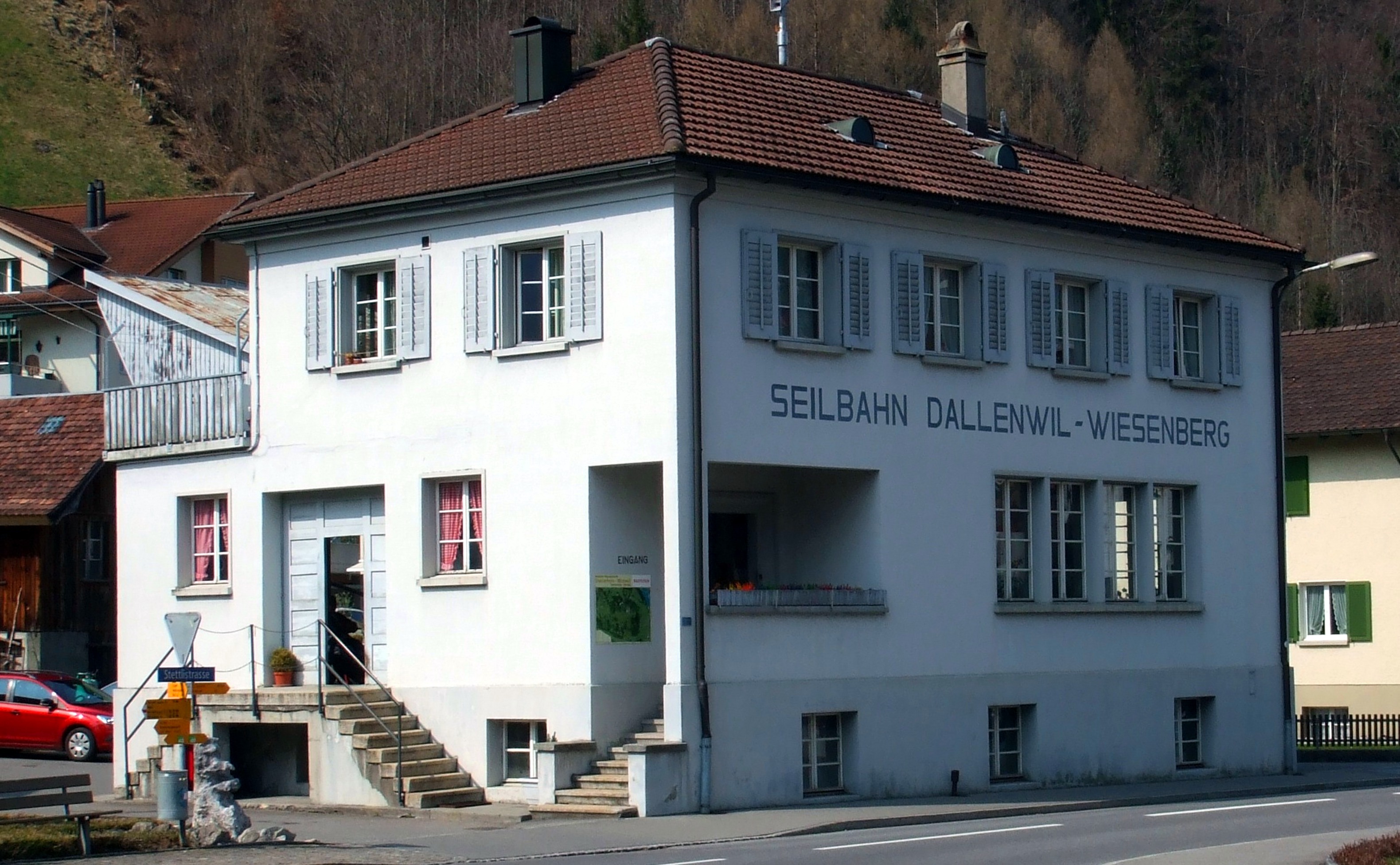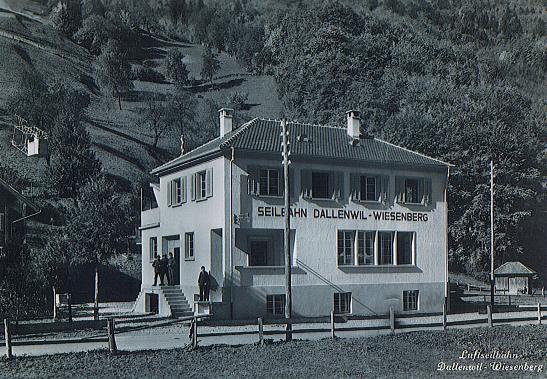We often make the point around these parts that cable car infrastructure and architecture are two completely different things. Sure, the architecture is at least partly limited by the space requirements of the cable car infrastructure, but that’s about the extent of it.
I was reminded of that when I recently stumbled across the Dallenwil-Wiesenberg Cable Car in the Engleberg region of Switzerland. The system, which dates from 1934, is nothing more than an incredibly modest Aerial Tram. An old Aerial Tram, carrying only 24 pphpd along its 2,300 meters of length.
If you look closely at the image above, you’ll note the almost vernacular design of the carriage (to the extreme left) which reminds one of those classic Swiss cable cars we wrote about a while back. This is a system that oozes history with a base terminal that continues the tradition. It’s charming, old, and perfectly in keeping with the surrounding urban fabric.

The Dallenwil Cable Car, today. Image via Wiesenbergbahn.ch.
It’s easy to disregard cable car technology as “too futuristic” or not in sync with street level urbanism. But that’s misguided.
The Dallenwil-Wiesenberg Cable Car demonstrates that even what appears to be a modest old Swiss farmhouse can be used as a cable car station. We should consider its lessons when we look to integrate other systems into our future transit networks.

